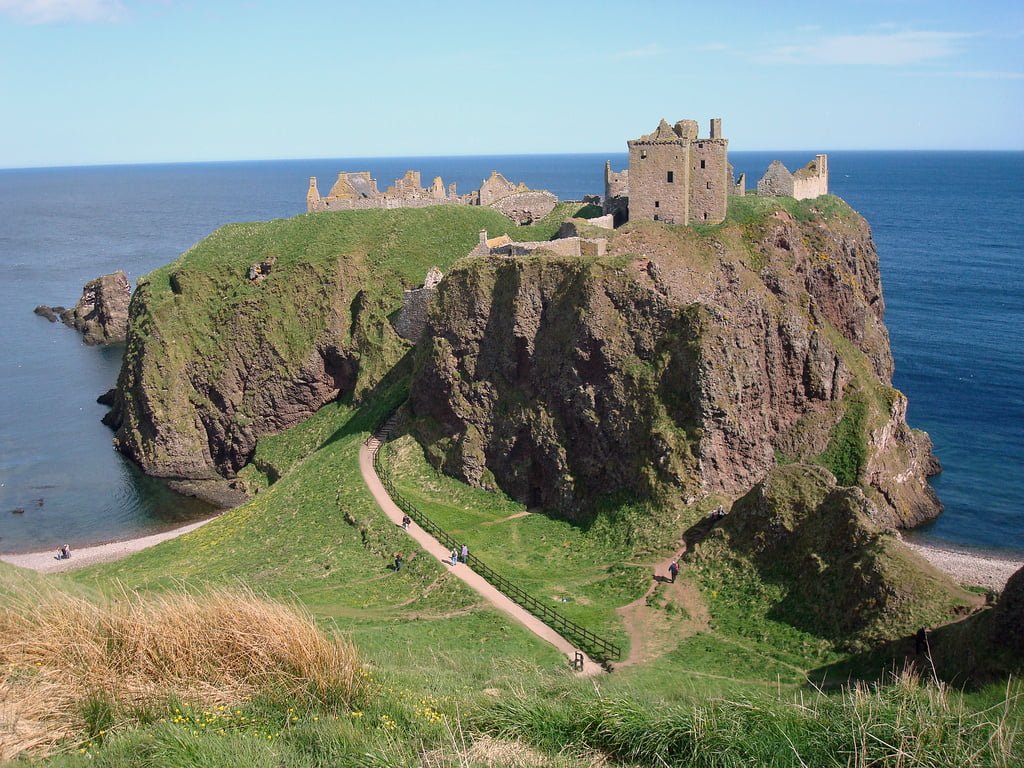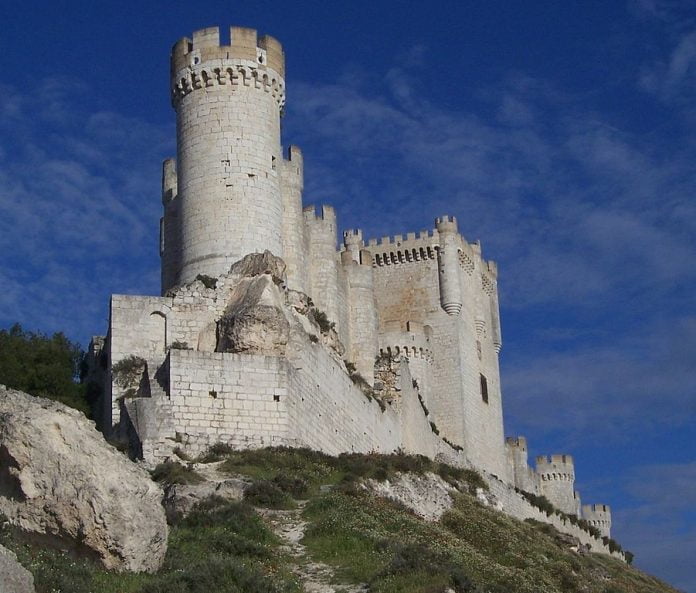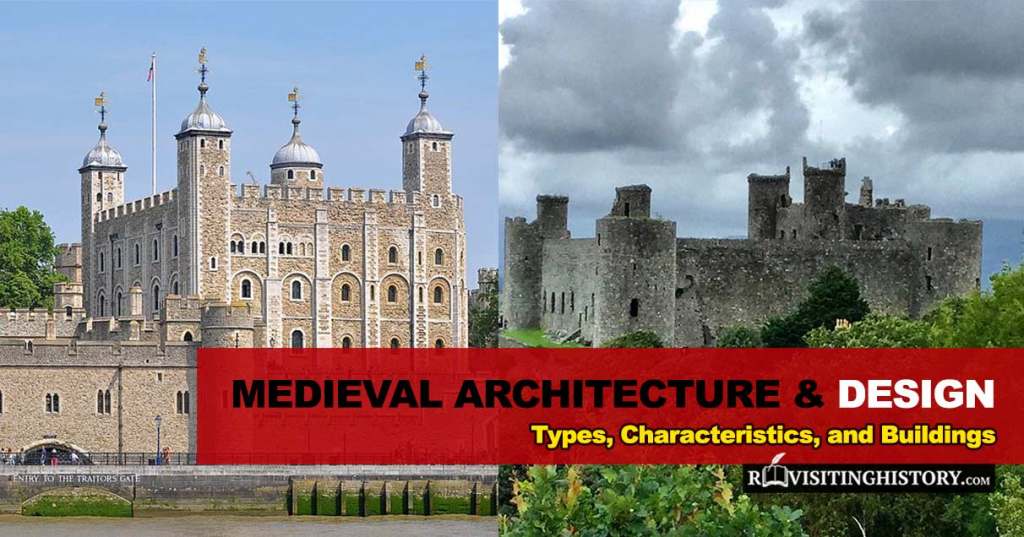Cliffs are among one the most majestic creations of nature. Because of their scenic beauty and defensive benefits, numerous castles are perched on these towering rocks. Visiting castles on cliffs, you can also enjoy the hues of poetic sunsets as you explore these historical marvels.
Castles on a cliff offer a unique opportunity to enjoy the blend of manmade structures and nature’s magnificence. You might find castles on the cliffs a little difficult to approach, but once you reach your destination, all the hassle of getting to the castle will likely seem worth the trouble.
Continue reading if you are interested in knowing more about castles located on cliffs and why some of these castles are bustling tourist spots.
Table of Contents
Alcazar of Segovia
The Alcazar de Segovia, often known as the Castle of Segovia, is a stone castle positioned in the historic district of Segovia, Spain. It was constructed on a rock, a reminder of its militaristic origins. It was the home of King Alfonso VIII. During the work of Spanish architects for John II and Henry IV in the 13th century, the structure acquired a Medieval appearance. The exterior of this medieval castle features a courtyard and pond with a drawbridge and keep fashioned in the Herrera style.
Explore the interesting interior sections, including a chapel and several aristocratic rooms, that can be seen today. The castle is set on the cliffside overlooking the city, with four turrets and many hallways displaying barrel vaults and double windows. Mudéjar painters and artisans adorned the inner hallways and rooms with elegant charm and beauty. It is home to the Armory Museum and the General Military Archives of Segovia, the oldest historical archive of the Spanish Armed Forces.
It is ideally situated around 100 kilometers (60 miles) from Madrid, the capital of Spain, and is readily accessible by many modes of transportation. The costliest ticket, which grants admission to all areas of the landmark, costs 9 euros ($10 USD).
Up to Date Information:
Visit the official website for the most recent information on ticket costs and opening hours: https://www.spain.info/en/places-of-interest/alcazar-segovia/
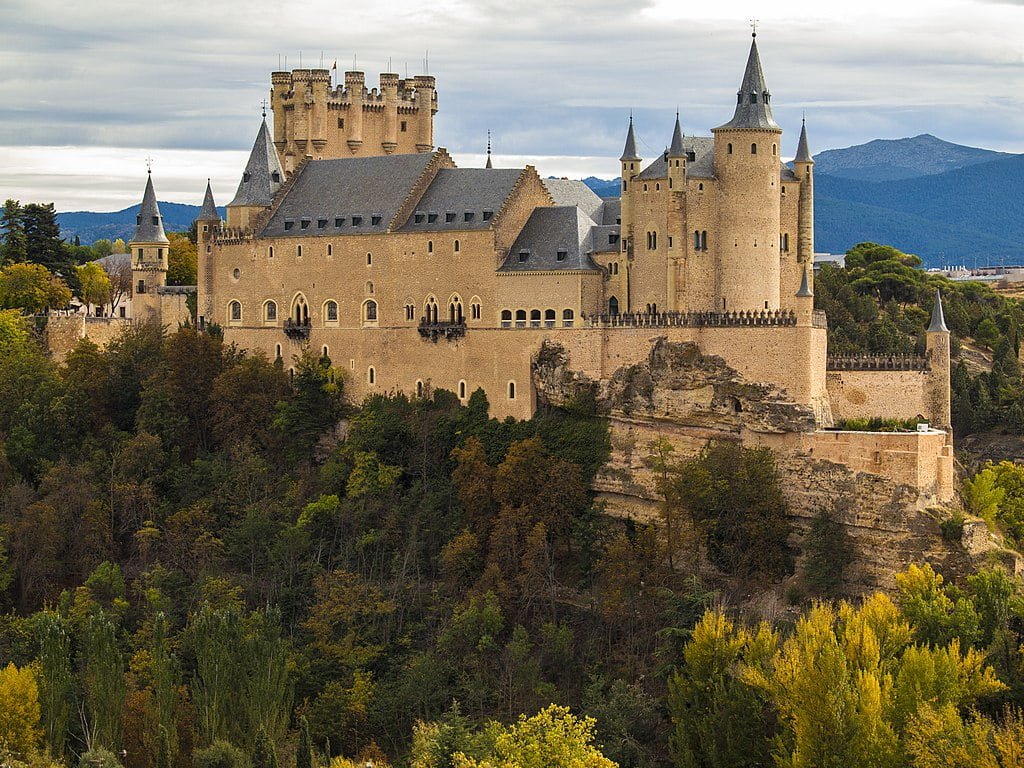
Dunluce Castle
Dunluce is among the most scenic and majestic castles in Ireland, situated in County Antrim. With indications of civilization dating back to the first millennium, the existing castle ruins date mostly to the sixteenth and seventeenth centuries. It was occupied by the McQuillan and MacDonnell clans in conflict.
You will be delighted to know about the exhibits of history and archaeology that are on display for visitors. It is remarkable to consider how resilient Dunluce is, perched on a cliff in such a vulnerable position. The fact that the castle is separated from the rest of the landmass and linked by a bridge makes it even more impressive.
Dunluce Castle offers a stunning view of the brilliant blue water from the peak of some of the country’s most dramatic cliffs. The castle has become a popular tourist site due to its use in the iconic Game of Thrones series.
Get to know some spine-chilling legends, such as the kitchen near the cliff supposedly collapsing into the frigid seas below during a very stormy night in 1639.
Dunluce Castle is open to the public from 10:00 am to 4:00 pm from November to February, and from 10:00 am to 6:00 pm, from March to October.
Up to Date Information:
Visit the official website for the most recent information on ticket costs and opening hours: https://discovernorthernireland.com/things-to-do/dunluce-castle-p675011
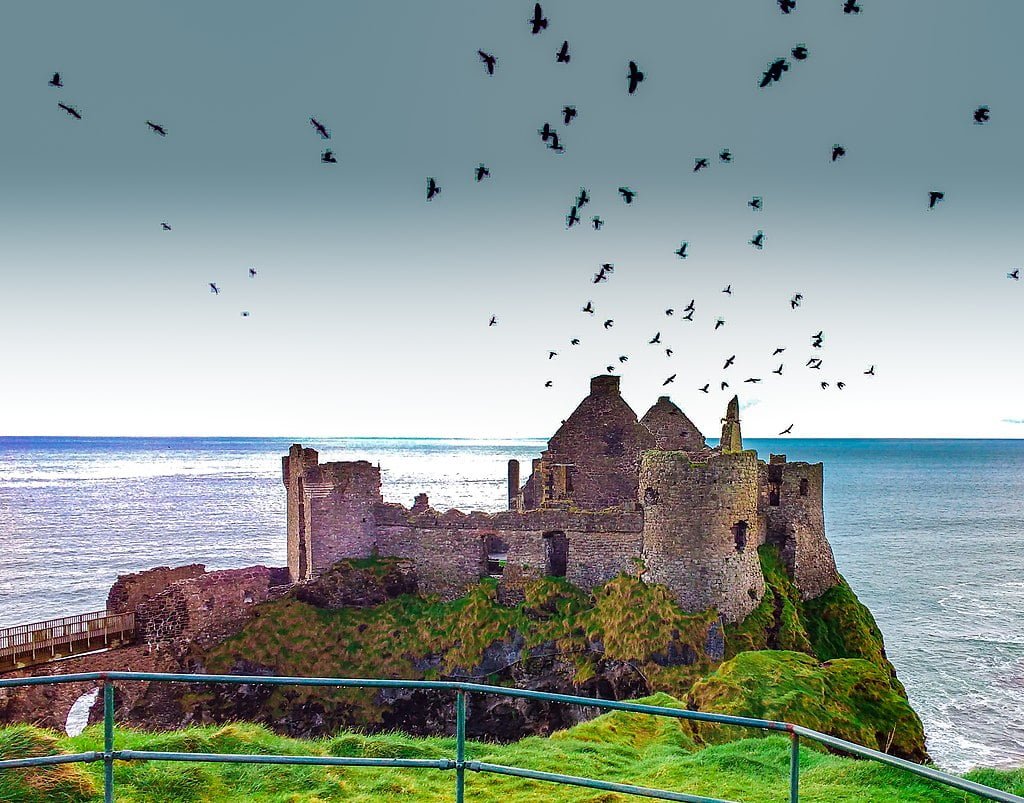
Castle of Peñafiel
Peñafiel Castle is located in Peñafiel, Valladolid Province of Spain. This clifftop castle is constructed of Campaspero stone and expresses German Gothic architecture. In 947, Fernan Gonzalez started building Penafiel as a border stronghold for protection against the Arabs. Sancho Garcia erected a full castle in 1013 to defend the territory.
The castle is situated on a clifftop where you can get a beautiful view of the Duratón and Botijas valleys. It features a single door and a cohesive look on the outside. The keep features a rectangular floor layout at a height of almost 30 meters (98 ft), a 14.5 by 20 meters (47.5 by 65.5 ft) base, and eight turrets. The tower has two courtyards on each side. The castle’s architecture consists of two stories and a stone vault. It was designated a National Monument in 1917 and now houses the Provincial Museum-Foundation of Valladolid Wines.
Up to Date Information:
Visit the official website for the most recent information on ticket costs and opening hours: https://www.spain.info/en/places-of-interest/penafiel-castle/
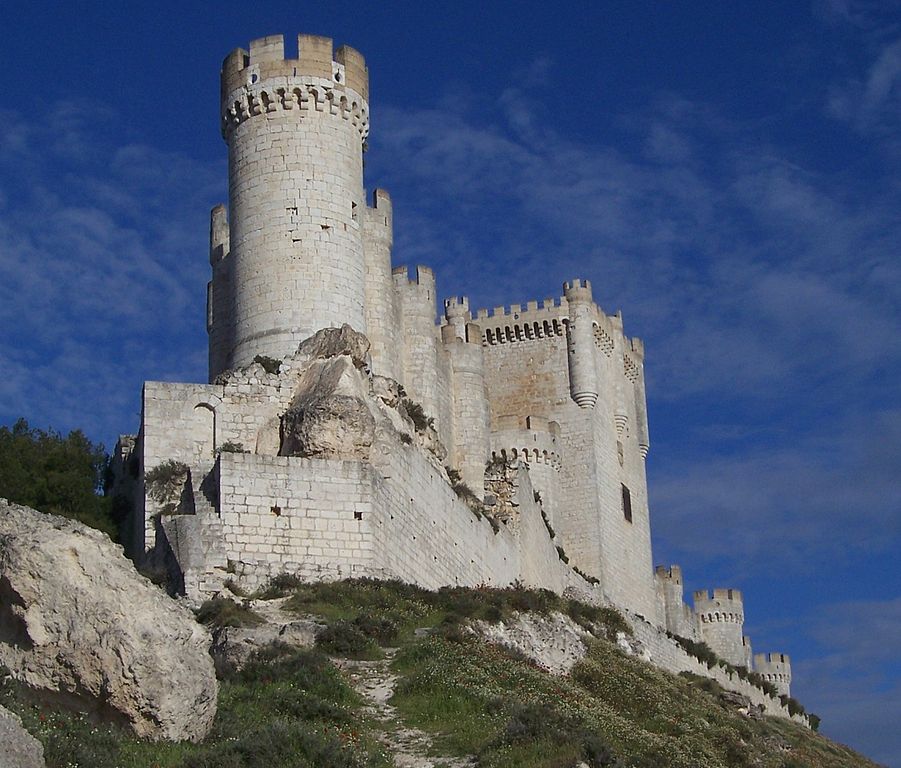
Rheinstein Castle
Allow yourself to be fascinated by the elegant medieval ambiance of Rheinstein Castle and get a chance to make incredible memories at this cliffside castle. Located near the town of Trechtingshausen in Rhineland-Palatinate, Germany, this medieval castle on a cliff allows you to connect to the compelling German past.
Rheinstein has a drawbridge and portcullis, characteristic of medieval castle construction and defense mechanisms. The entry to the courtyard, which overlooks the Rhine, is located just beyond the souvenir shop beside the entryway. The courtyard of Rheinstein is regarded as the Burgundy Garden because of the Burgundy grape vine that grows there. This, nearly 500-year-old, vine is still producing grapes.
Enjoy a delectable meal at the “Kleiner Weinprinz” restaurant at Rheinstein Castle while taking in the stunning views the terrace provides. Experience the delicious homemade cakes, Tarte flambées from the hot stone, and a sparkling glass of wine from the valley.
Stairs go down from the garden to the castle chapel. The chapel’s Gothic altarpiece is a carving showing Jesus at the Last Supper. Further stairs go downwards between the rock and the cathedral to the princely mausoleum of Prince Frederick William Louis’s family.
Up to Date Information:
Visit the official website for the most recent information on ticket costs and opening hours: https://www.burg-rheinstein.de/en/
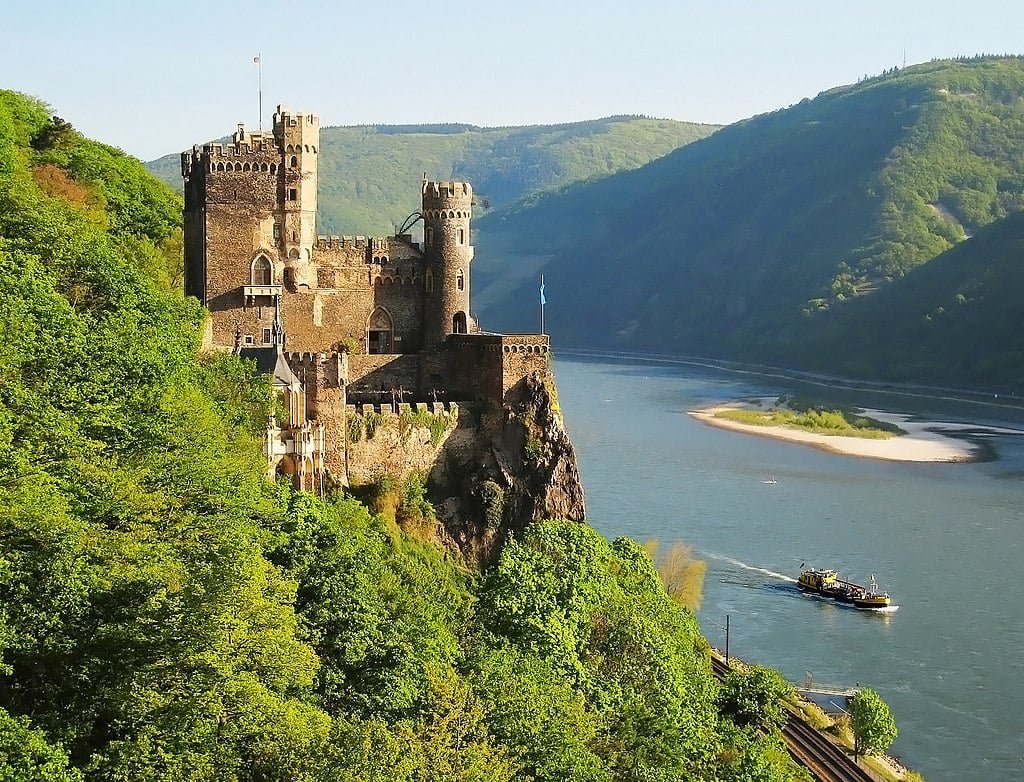
Explore Medieval Times Deeper or Continue Reading…
Culzean Castle
The picturesque Culzean Castle is situated near South Ayrshire on the west coast of Scotland. It overlooks the Firth of Clyde on the Ayrshire coast. Culzean Castle is a place for history buffs, hikers, walkers, landscape enthusiasts, and those interested in centuries-old buildings.
Experience the castle’s splendor and explore the majestic entry hall, which houses one of the world’s most extensive collections of British military flintlock pistols. Don’t forget to visit the historic artifact-filled spectacular chambers and innovative kitchen. Get to discover and know about the wide Oval Staircase with its towering colonnades and exquisite art pieces, the design masterwork of Robert Adam. Explore the remarkable Round Drawing Room, which provides stunning views of the Firth of Clyde.
You can wander through the gardens, locate the hidden structures, visit the deer park, have a good time in the Adventure Cove and Wild Woodland Play Parks, and purchase mementos at the on-site farm shop.
Culzean Castle is open from April 2nd to October 31st from 10.30 am – 4:30 pm, with the last entry being 4 pm. The Country Park of the castle is open all year, daily.
Up to Date Information:
Visit the official website for the most recent information on ticket costs and opening hours: https://www.nts.org.uk/visit/places/culzean

Aragonese Castle
Italy’s Aragonese Castle is near the northernmost tip of the Gulf of Naples. Hiero I of Syracuse erected the first astle in 474 B.C. Concurrently, two towers were constructed to control the movement of ships in the area. In 326 BCE, the Romans and, later, the Parthenopeans (the ancient inhabitants of Naples) conquered the stronghold. In 1441, Alfonso V of Aragon replaced the wooden bridge linking the rock to the island with a stone bridge and reinforced the fortifications to protect the residents from pirate attacks.
The castle is accessible by a tunnel with wide gaps that allow light to pass through. Along the tunnel is a church dedicated to the area’s patron saint, John Joseph of the Cross. The castle is surrounded by unparalleled tranquility and peacefulness, inspired by historical and contemporary art displays, researched by historians and enjoyed by visitors who explore learning through them.
The castle is presently managed by the third generation of the Mattera family, which ensures public access 365 days a year, upkeeps the castle estate, and promotes cultural events.
Up to Date Information:
Visit the official website for the most recent information on ticket costs and opening hours: https://castelloaragoneseischia.com/
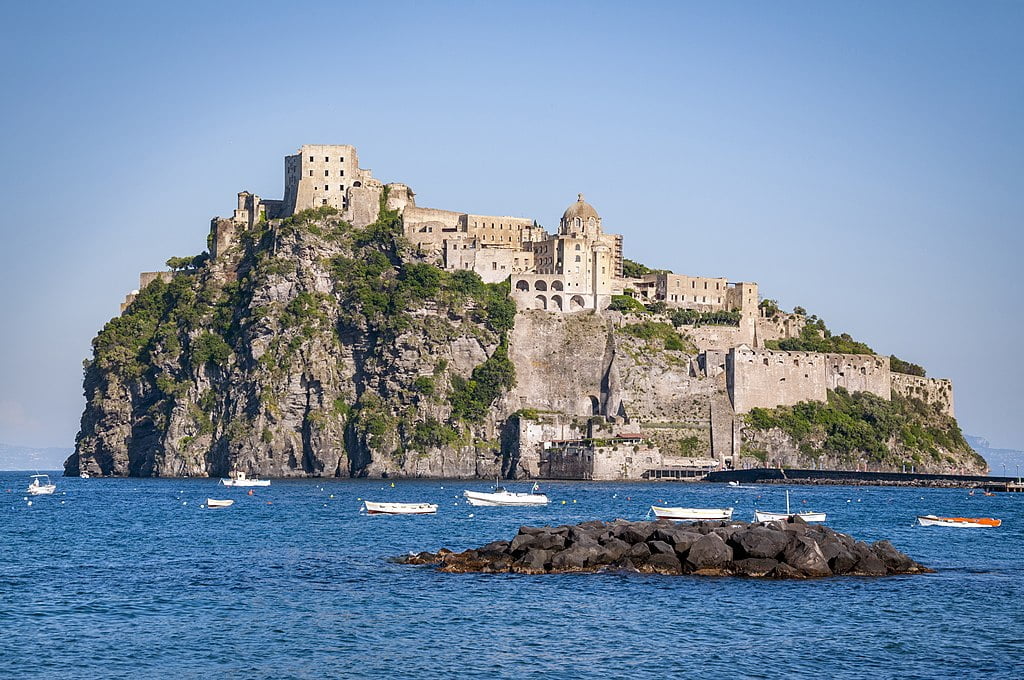
Neuschwanstein Castle
Neuschwanstein Castle is situated on a mountain cliff in the town of Hohenschwangau near Füssen in the southwestern region of Bavaria, Germany. Neuschwanstein is now one of the most visited fantasy castles in Europe. Annually, around 1,400,000 tourists visit “the castle of the fairytale king.”
You will be interested to know that the castle was established as a getaway in tribute to Richard Wagner by King Ludwig II of Bavaria. Ludwig financed the palace’s construction with his wealth and substantial borrowing rather than with Bavarian state resources–resources that untimely ran dry. Beginning in 1869, construction was never fully finished.
Neuschwanstein is representative of the contemporary architectural style defined as Castle Romanticism. Neuschwanstein exemplifies Ludwig II’s goals and desires more strongly than any of his other structures. The castle was not intended for royal display but rather as a refuge. Ludwig II withdrew into the Middle Ages’ romantic realm of dreams.
Religious and political concepts were included in the design of the fortress. This is especially evident in the throne room. These paintings illustrate how Ludwig saw monarchy “by the Grace of God”: as a divine mission endowed with extraordinary abilities that the Bavarian king had never had.
Winter opening time from October 16th, 2022, to March 31st, 2023, for the guided tours are from 10.00 am to 4.00 pm daily. Summer opening time from April 1st, 2023, to October 15th, 2023, with guided tours daily from 9.00 am to 6.00 pm. The castle remains close from December 24th– 25th and from December 31st till January 1st.
Up to Date Information:
Visit the official website for the most recent information on ticket costs and opening hours: https://www.neuschwanstein.de/englisch/tourist/
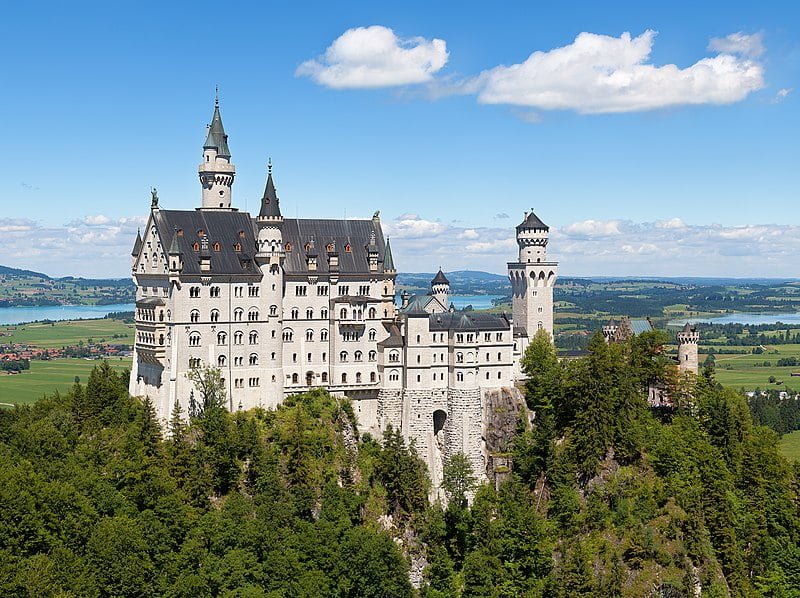
Chepstow Castle
Get ready to embark on an adventure that will surely leave you in awe. In Monmouthshire, Wales, Chepstow Castle is a Norman castle built steeply over the River Wye. It is a well-preserved castle that runs along a cliff of limestone over the river. This is one of the finest locations in Britain to see how castles have adapted to more lethal armament – and their occupants’ lofty aspirations. Chepstow was the residence of some of the richest and most influential individuals of the medieval and Tudor periods for more than six centuries. Chepstow’s strategic location enabled troops to supply the castle across the river during battles and sieges while protecting it from assault.
The Great Hall of Chepstow was constructed in 1067. The Great Hall and the stunning cliffside at Chepstow are two of its most fascinating features. The castle is the oldest castle still standing in Britain. Many original Norman constructions have long ago vanished, yet at Chepstow, it is still possible to observe and touch FitzOsbern’s first large construction endeavor in Wales.
Chepstow Castle has been open to visitors under the care of Cadw, the Welsh government agency tasked with safeguarding, maintaining, and exhibiting the architectural heritage of Wales, since 1984. In addition to the opportunity to wander around the castle walls and inside Marten’s Tower, the castle often hosts unique events. The Castle was selected to shoot sequences for the 50th-anniversary special of Doctor Who.
Opening times of the castle vary by season, check the official website for exact times and dates. The castle remains closed on 24, 25, 26 December and January 1st.
Up to Date Information:
Visit the official website for the most recent information on ticket costs and opening hours: https://cadw.gov.wales/visit/places-to-visit/chepstow-castle
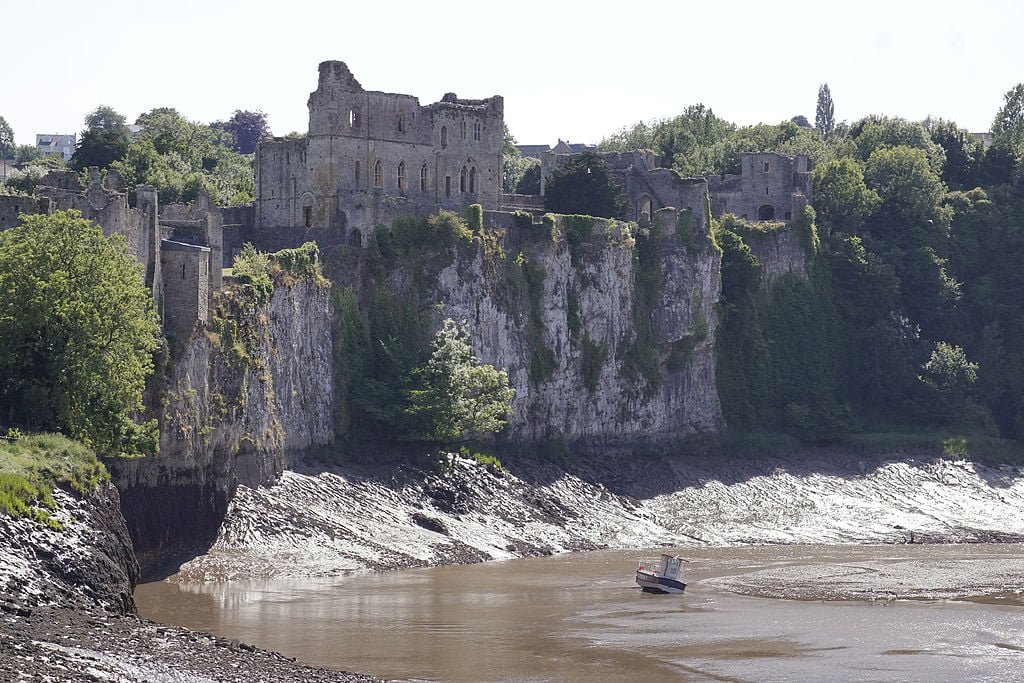
Dunnottar Castle
The medieval Dunnottar Castle is situated on a rocky promontory along the northeastern coast of Scotland, two miles south of Stonehaven along the Aberdeenshire Coastal Trail. These magnificent and haunting clifftop remains were once an invincible castle of the Earls Marischal, one of the most influential families in Scotland. This historical wonder sits atop a 160-foot cliff, guarded by the North Sea on three sides. This charming and eerie remnant of the past is a photographer’s heaven, a history buff’s dream, and a renowned tourist site for travelers from all over the globe.
Dunnottar Castle has played a pivotal part in Scottish history for more than a millennium and conceals many mysteries from Scotland’s fascinating history. In the 1650s, the castle is renowned for preserving the Honours of Scotland (the Scottish Crown Jewels) from Oliver Cromwell’s troops. William Wallace and Mary, Queen of Scots were among the notable personalities who stayed at the castle.
Dunnottar is closed to the public on the 25th & 26th of December and the 1st & 2nd of January, annually. For the rest of the year, the Castle’s opening hours vary in season.
Up to Date Information:
Visit the official website for the most recent information on ticket costs and opening hours: https://www.dunnottarcastle.co.uk/
Dunnottar Castle concludes with a list of some mesmerizing castles on cliffs. If you are planning to visit Europe or are a resident of this historically-rich continent, check out these majestic castles that still survive in contemporary times, reflecting the grand architecture of the Medieval world.
